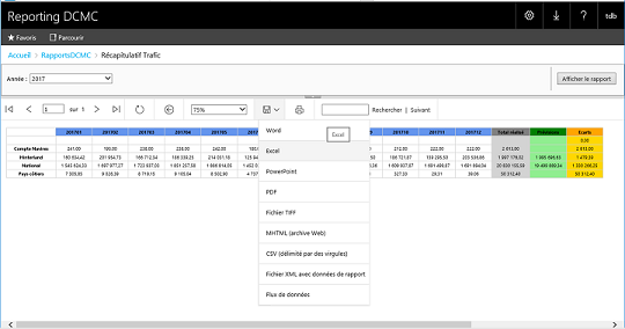PORT AUTONOME D'ABIDJAN
SEJEN CI collabore avec l’Autorité Portuaire de la Côte d’Ivoire, pour améliorer la prise de décision en temps réel de sa Direction Commerciale Marketing et Communication.
Context
The Autonomous Port of Abidjan (PAA) is the second most important in Africa after the Port of Durban (in South Africa). The PAA contributes about 90% of the customs revenue of Côte d’Ivoire, hosts 65% of the country’s industrial activities, and remains the main economic center of the country representing 60% of the Ivorian GDP. The optimal functioning of the port is therefore essential to the economic development and economy of Côte d’Ivoire. It also serves as a passageway for neighboring countries such as Burkina Faso, Mali, Chad, Niger or Guinea that do not have coastal access. Indeed, 70% of their foreign trade transits there.
Challenges
In fulfilling its missions and objectives, the Commercial Marketing and Communication Department (DCMC) of the PAA produces periodic activity reports. It uses these reports for decision-making and planning, in particular on the “Commercial Actions”, “Marketing” and “Communication” aspects vis-à-vis customers. Until recently, the production of these reports was performed manually and affected the ability of the institution to have access to accurate and up-to-date data necessary for optimal management of port activities. The difficulties caused by the production of these reports were due to the slowness of the process and the errors related to the manual processing of the data. Indeed, the activity reports for the previous month were produced at the end of the following month, in order to avoid a repetition of this long and costly process. This long delay in the production of these reports caused visibility problems for the PAA, which had little information on the activities of the current month and could not make decisions in real time on the actions to be taken. In addition, the reports produced previously often contained errors due to the manual processing of data from various sources. Finally, this activity was human resource intensive; a minimum of five (5) officers were involved in it each month – it was estimated that an average of 300 hours each month was needed to complete this task – which did not constitute optimal management of these resources.
Solution
To solve these reporting problems, SEJEN CI created a dedicated reporting platform that automates the tasks and produces reports in near real time. Automation eliminates the risk of errors due to manual operations and offers the flexibility of ad-hoc report creation. Automation also allows previously assigned officers to now focus on analyzing and interpreting port operation reports.
Approach
- Understand the Environment and identify the specific needs. Indeed, despite the existence of a Port Information System (SIP) database, the data contained did not meet the needs of the DCMC;
Troubleshoot performance issues. As the historical database is continually solicited by Port users, its performance was strongly affected by the production of the required reports
Resolve certain inconsistencies in the SIP database (such as input errors, inadequacies in certain processes, etc.) and inform the development of anomaly reports so that the necessary corrective actions can be initiated by the PAA
Initiate a pilot phase by developing daily extraction tools (ETLs) of the data needed to feed a statistical database for the creation of DCMC reports
Collect comments and feedback from the results of the pilot phase to then inform the finalization of the system
Resolve certain inconsistencies in the SIP database (such as input errors, inadequacies in certain processes, etc.) and inform the development of anomaly reports so that the necessary corrective actions can be initiated by the PAA
Train users and administrators to operate the new system.
Results and Impact
The approach undertaken by SEJEN has made it possible to set up 28 activity reports, and among them 7 reports concerning activities related to customers, goods, containers, as well as ships and 21 anomaly reports on activities port.
In addition, the immediate impacts identified by the client were as follows:
- The report creation activity is automated, thus limiting human errors and reducing the time required for their production;
- This project freed up the 5 agents usually involved in manual production, allowing the reallocation of more than 300 hours of productivity;
- The reports are accessible on a web interface;
- This web interface has a functionality for planning report execution and sharing the result by email to the managers concerned;
- The PAA can now monitor port-related activities on a daily basis;
- Reports are updated automatically as data is entered into the port information system by agents;
- PAA staff can now focus on analyzing and interpreting data and supporting and informing business actions.
The success of this activity inspired another direction of the PAA (the Economic Studies, Strategy and Planning Direction or DEESP) of the Port Performance Department to start, with the help of SEJEN, a similar project for the automation and real-time calculation of PAA performance indicators.

Key Stakeholders

